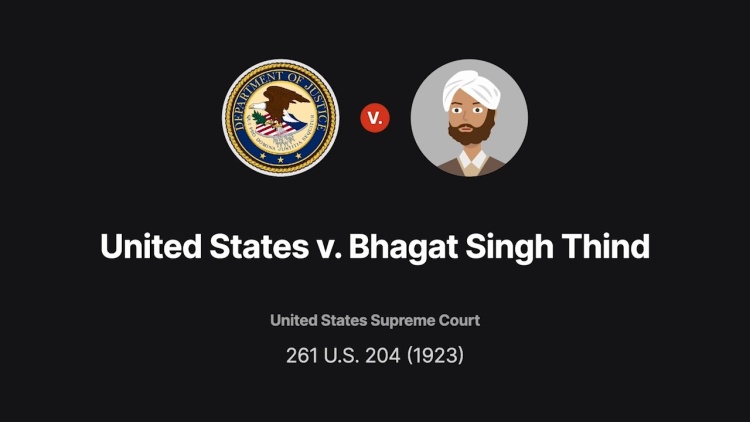United States v. Bhagat Singh Thind
United States Supreme Court
261 U.S. 204 (1923)

- Written by Katrina Sumner, JD
Facts
Bhagat Singh Thind (defendant) was born in Punjab, one of India’s northernmost areas. Thind was a member of a high social caste that some scientists classified as part of the Caucasian or Aryan race. Based on this classification, Thind applied for United States citizenship. A district court ruled that a Hindu born in India was eligible for citizenship. The United States (plaintiff) appealed the decision to a circuit court. Before rendering a decision, the circuit court certified two questions to the United States Supreme Court. The first question was whether a Hindu person of a high social caste born in India was a white person under the naturalization statute. The second question was whether Hindus who entered the country lawfully before the passage of the naturalization statute in 1917 were eligible for citizenship.
Rule of Law
Issue
Holding and Reasoning (Sutherland, J.)
What to do next…
Here's why 899,000 law students have relied on our case briefs:
- Written by law professors and practitioners, not other law students. 47,000 briefs, keyed to 994 casebooks. Top-notch customer support.
- The right amount of information, includes the facts, issues, rule of law, holding and reasoning, and any concurrences and dissents.
- Access in your classes, works on your mobile and tablet. Massive library of related video lessons and high quality multiple-choice questions.
- Easy to use, uniform format for every case brief. Written in plain English, not in legalese. Our briefs summarize and simplify; they don’t just repeat the court’s language.





